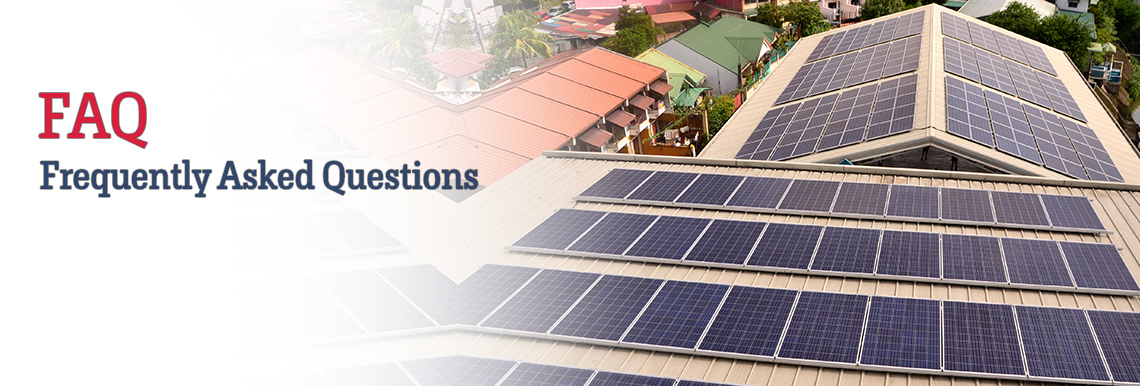
When certain semiconducting materials, such as certain kinds of silicon, are exposed to sunlight, they release small amounts of electricity. This process is known as the photoelectric effect. The photoelectric effect refers to the emission, or ejection, of electrons from the surface of a metal in response to light. It is the basic physical process in which a solar electric or photovoltaic (PV) cell converts sunlight to electricity.
Sunlight is made up of photons, or particles of solar energy. Photons contain various amounts of energy, corresponding to the different wavelengths of the solar spectrum. When photons strike a PV cell, they may be reflected or absorbed, or they may pass right through. Only the absorbed photons generate electricity. When this happens, the energy of the photon is transferred to an electron in an atom of the PV cell (which is actually a semiconductor).
With its newfound energy, the electron escapes from its normal position in an atom of the semiconductor material and becomes part of the current in an electrical circuit. By leaving its position, the electron causes a hole to form. Special electrical properties of the PV cell—a built-in electric field—provide the voltage needed to drive the current through an external load (such as a light bulb)
A PV system is made up of different components. These include PV modules (groups of PV cells), which are commonly called PV panels; one or more batteries; a charge regulator or controller for a stand-alone system; an inverter for a utility-grid-connected system and when alternating current (ac) rather than direct current (dc) is required; wiring; and mounting hardware or a framework.
A PV system that is designed, installed, and maintained well will operate for more than 20 years. The basic PV module (interconnected, enclosed panel of PV cells) has no moving parts and can last more than 30 years. The best way to ensure and extend the life and effectiveness of your PV system is by having it installed and maintained properly. Experience has shown that most problems occur because of poor or sloppy system installation.
There are four main types of solar energy technologies:
- Photovoltaic (PV) systems, which convert sunlight directly to electricity by means of PV cells made of semiconductor materials.
- Concentrating solar power (CSP) systems, which concentrate the sun’s energy using reflective devices such as troughs or mirror panels to produce heat that is then used to generate electricity.
- Solar water heating systems, which contain a solar collector that faces the sun and either heats water directly or heats a “working fluid” that, in turn, is used to heat water.
- Transpired solar collectors, or “solar walls,” which use solar energy to preheat ventilation air for a building.
PV can be used to power your entire home’s electrical systems, including lights, cooling systems, and appliances. PV systems today can be blended easily into both traditional and nontraditional homes. The most common practice is to mount modules onto a south-facing roof or wall. For an additional aesthetic appeal, some modules resemble traditional roof shingles.
PV systems can be blended into virtually every conceivable structure for commercial buildings. You will find PV being used outdoors for security lighting as well as in structures that serve as covers for parking lots and bus shelters, generating power at the same time.
A photovoltaic (PV) system needs unobstructed access to the sun’s rays for most or all of the day. The shading on the system can significantly reduce energy output. Climate is not really a concern, because PV systems are relatively unaffected by severe weather. In fact, some PV modules actually work better in colder weather.
The size of solar system you need depends on several factors such as how much electricity or hot water or space heat you use, how, the size of your roof, and how much you’re willing to invest. Also, do you want the system to supply your complete energy usage or to supplant a portion of your higher cost energy usage? You can contact a system designer/installer to determine what type of system would suit your needs.
PV systems have few moving parts, so they require little maintenance. The components are designed to meet strict dependability and durability standards so they can stand up to the elements. However, they are fairly sophisticated electric systems, so installation usually requires the knowledge and experience of a licensed electrical equipment contractor.
Unfortunately, there is no single or simple answer. But a solar rebate and other incentives can reduce the cost of a PV system. This cost depends on a number of factors, such as whether it is a stand-alone system or is integrated into the building design, the size of the system, and the particular system manufacturer, retailer, and installer. For solar water heaters and space heaters, you also have to consider the price of the fuel used to back up the system. In most cases, you would have to add the cost of natural gas or electricity to get a more accurate estimate of how much you can expect to pay for a solar energy system.
It is also difficult to say how much you will save with a solar energy system, because savings depend on how much you pay your utility for electricity or natural gas, and how much your utility will pay you for any excess power that you generate with your solar system.
